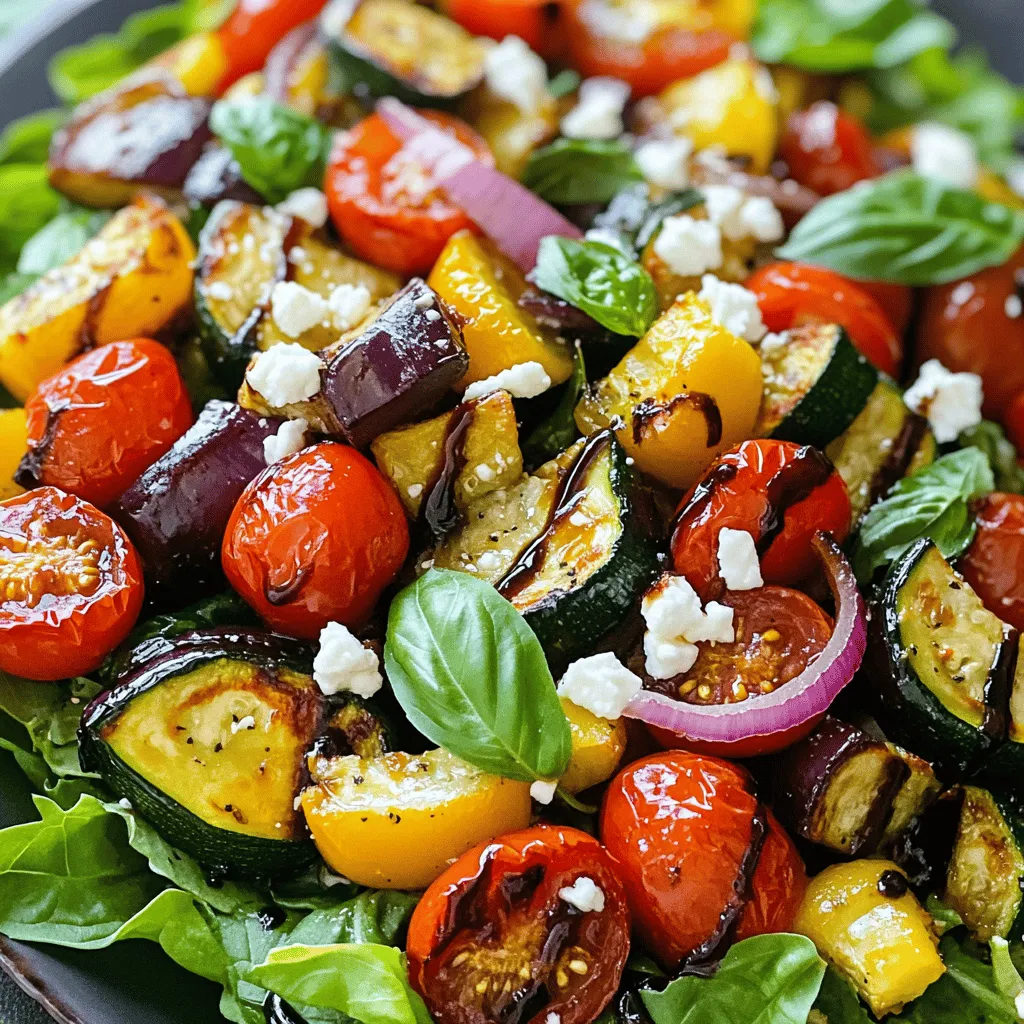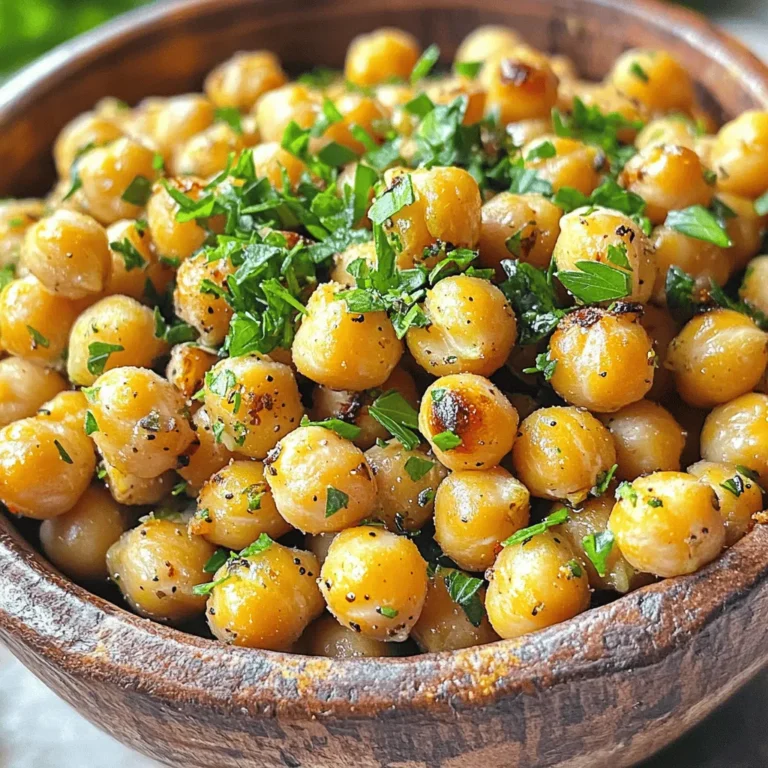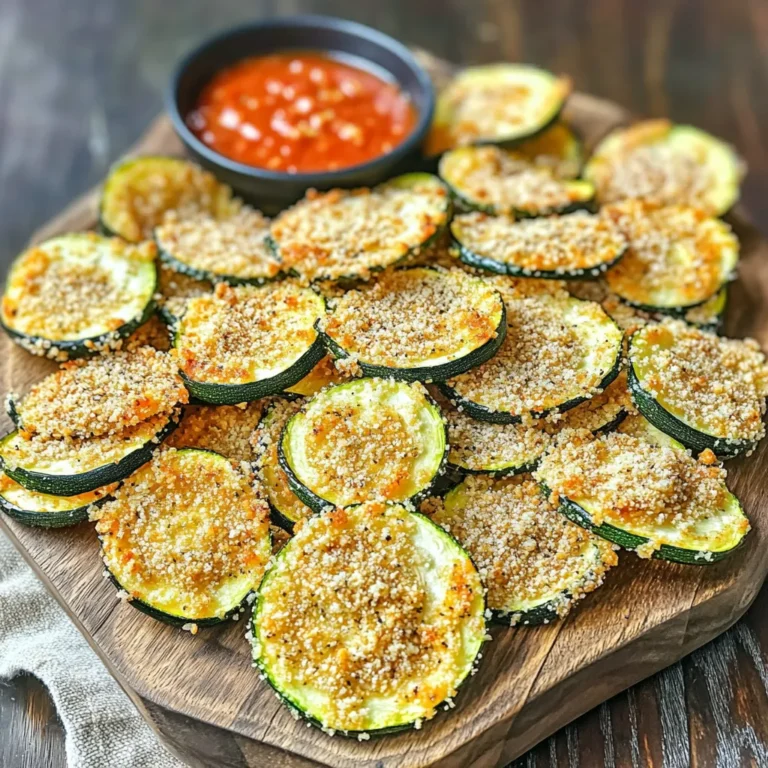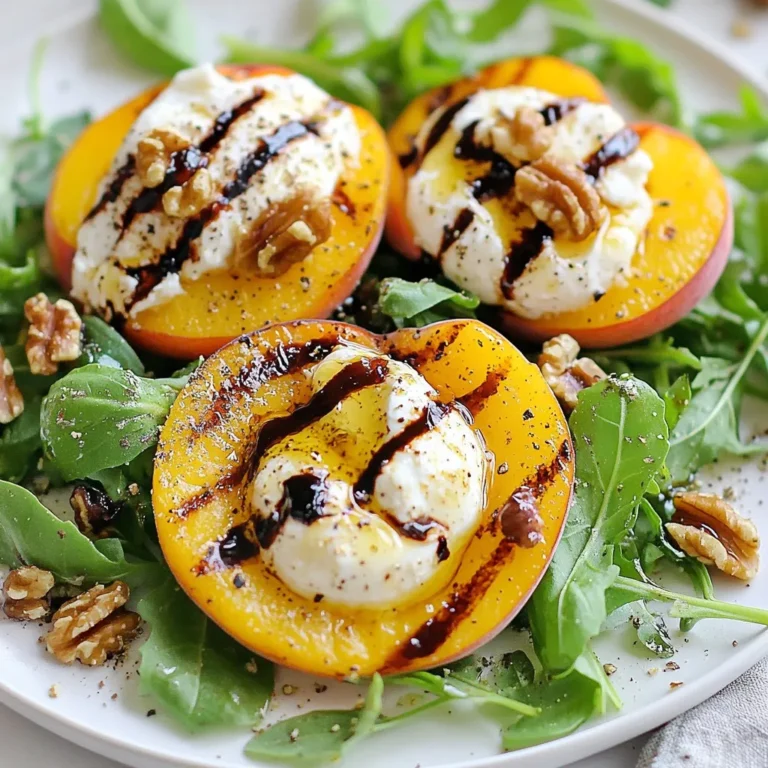Balsamic Roasted Vegetable Salad Flavorful and Fresh
![To create this vibrant salad, gather these fresh ingredients: - 1 medium zucchini, sliced into half-moons - 1 bell pepper (red or yellow for sweetness), chopped into bite-sized pieces - 1 small eggplant, diced into uniform cubes - 1 cup cherry tomatoes, halved for a burst of sweetness - 1 red onion, cut into wedges for flavor - 3 tablespoons balsamic vinegar for a tangy kick - 2 tablespoons extra-virgin olive oil for richness - 1 tablespoon honey to balance the acidity - Sea salt and freshly cracked pepper to taste - 1 teaspoon dried oregano for an aromatic touch - 1 cup mixed greens (arugula, spinach, or your favorites) - ¼ cup feta cheese, crumbled (optional, for creaminess) - Fresh basil leaves for a fragrant garnish Not all ingredients need to be set in stone. Here are some smart swaps: - Use yellow squash instead of zucchini. The texture remains similar. - Any color bell pepper works well; green adds a more bitter taste. - Swap eggplant for mushrooms for a different texture and flavor. - Try different vinegars, like red wine vinegar, if balsamic is not available. - Maple syrup can replace honey for a vegan option. - For a dairy-free choice, omit feta cheese or use a vegan alternative. Choosing the right veggies makes a big difference. Here’s how to select the best: - Look for firm zucchini with shiny, smooth skin. Avoid soft spots. - Choose bell peppers that feel heavy and have smooth skin. - For eggplant, pick ones that are shiny and feel heavy for their size. - Cherry tomatoes should be plump and free from blemishes. - Pick red onions that are firm and have a vibrant color. - Visit local farmers' markets for the freshest produce whenever possible. These small choices can bring your Balsamic Roasted Vegetable Salad to life. For the complete recipe, check the [Full Recipe]. First, set your oven to 425°F (220°C). This high heat helps the veggies roast nicely. While the oven heats, grab a large mixing bowl. Add your sliced zucchini, chopped bell pepper, diced eggplant, halved cherry tomatoes, and red onion wedges. Mix them well. This step ensures every bite is packed with flavor. Next, take a small bowl. In it, combine 3 tablespoons of balsamic vinegar, 2 tablespoons of extra-virgin olive oil, and 1 tablespoon of honey. Add a pinch of sea salt and freshly cracked pepper. Finally, mix in 1 teaspoon of dried oregano. Whisk these ingredients together until smooth. This vinaigrette will bring a tangy and sweet kick to your salad. Now, line a baking sheet with parchment paper. Spread your mixed vegetables in a single layer. Make sure they are not crowded, as this helps them roast evenly. Place the baking sheet in the oven and roast for 20-25 minutes. Stir the vegetables halfway through. This mix ensures they cook evenly and get that lovely caramelization. Once the veggies are tender and golden, take them out and let them cool for a few minutes. In a large serving bowl, add your fresh mixed greens. Then, toss in the roasted vegetables. Gently mix until the greens and vegetables blend well. If you like, sprinkle ¼ cup of crumbled feta on top. Finally, add fresh basil leaves for a fragrant touch. Enjoy your colorful and tasty salad! For the full recipe, check out the details provided above. To get the best flavor, cut your vegetables into similar sizes. This step helps them roast evenly. Place them in a single layer on the baking sheet. Crowding the pan can cause steaming instead of roasting. Stir the vegetables halfway through cooking. This simple action helps them brown nicely on all sides. Always dress your salad right before serving. This keeps the greens fresh and crunchy. Use just enough dressing to coat the veggies. A light touch prevents sogginess. When mixing, toss gently to avoid bruising the greens. If you prefer more flavor, add more balsamic vinegar or a splash of lemon juice. Fresh herbs can elevate your salad. Try adding chopped parsley or cilantro for a fresh twist. You can also add a pinch of red pepper flakes for a kick. Experiment with spices like cumin or paprika for unique flavors. These additions can make your salad truly special and memorable. {{image_4}} You can mix and match veggies to suit your taste. Try adding carrots for sweetness or broccoli for crunch. Swap in asparagus for a fresh twist. You can even use sweet potatoes for a hearty base. The options are endless! Each veggie brings its own flavor and texture. You can create a new salad every time. Want to make this salad filling? Add proteins like grilled chicken or shrimp. Chickpeas or black beans also work well for plant-based options. They boost the protein without altering the salad's great taste. If you want a creamy touch, add avocado slices. These options turn your salad into a complete meal. This salad is easy to make vegan and gluten-free. Just skip the feta cheese or use a plant-based alternative. Use gluten-free grains like quinoa for added texture. You can also mix in nuts or seeds for crunch. These simple swaps keep your salad tasty while meeting dietary needs. Enjoy the fresh flavors without worry! For the full recipe, check out the Balsamic Roasted Vegetable Salad. Store leftover Balsamic Roasted Vegetable Salad in an airtight container. Make sure the salad is cool before sealing it. This keeps the flavors fresh and prevents sogginess. Try to eat the leftovers within three days for the best taste. I recommend using glass containers for storing your salad. Glass is non-reactive and helps keep the food fresh longer. If you prefer plastic, choose BPA-free containers. Make sure they fit your salad snugly to limit air exposure. To reheat roasted vegetables, place them on a baking sheet. Heat your oven to 350°F (175°C) and roast for about 10-15 minutes. This keeps the veggies crispy and warm. You can also reheat them in a skillet over medium heat for a few minutes. Just stir often to avoid burning. If you want to add a little moisture, a splash of balsamic vinegar can help revive the flavors. Enjoy your meal! Yes, you can make this salad ahead. Roast the veggies and prepare the salad. Keep the roasted veggies and greens separate. Store them in the fridge. Mix them just before serving for the best taste and texture. Mixed greens work great with roasted veggies. I love using arugula, spinach, or kale. They add crunch and a fresh taste. You can choose any greens you enjoy. Just pick ones that won’t wilt fast. Balsamic roasted vegetables last about 3 to 5 days in the fridge. Store them in an airtight container. The flavors will deepen over time, making them even tastier. Just reheat them before serving for a warm dish. You can use frozen vegetables, but fresh is best. Frozen veggies may release more water while cooking. If using frozen, roast them a bit longer. This helps them get nice and crispy. Balsamic roasted vegetable salad is easy and fun to make. We covered the ingredients, step-by-step instructions, and tips for the best results. You can customize this salad with different veggies or proteins. Proper storage keeps leftovers fresh, and I shared FAQs to answer common questions. Try this salad for a tasty and healthy meal. Enjoy making it your own!](https://goldendishy.com/wp-content/uploads/2025/06/26f5156f-9b75-49f6-aa69-260bfc3a782d.webp)
Looking for a fresh, tasty salad that’s easy to make? My Balsamic Roasted Vegetable Salad is just what you need! It combines colorful veggies with a sweet, tangy dressing. Whether you’re a busy parent, a health enthusiast, or just want to impress guests, this salad delivers. Join me as I guide you through each step, share tips on selecting fresh produce, and explore fun variations. Let’s get started!
Ingredients
Complete ingredient list for Balsamic Roasted Vegetable Salad
To create this vibrant salad, gather these fresh ingredients:
– 1 medium zucchini, sliced into half-moons
– 1 bell pepper (red or yellow for sweetness), chopped into bite-sized pieces
– 1 small eggplant, diced into uniform cubes
– 1 cup cherry tomatoes, halved for a burst of sweetness
– 1 red onion, cut into wedges for flavor
– 3 tablespoons balsamic vinegar for a tangy kick
– 2 tablespoons extra-virgin olive oil for richness
– 1 tablespoon honey to balance the acidity
– Sea salt and freshly cracked pepper to taste
– 1 teaspoon dried oregano for an aromatic touch
– 1 cup mixed greens (arugula, spinach, or your favorites)
– ¼ cup feta cheese, crumbled (optional, for creaminess)
– Fresh basil leaves for a fragrant garnish
Substitutions for specific ingredients
Not all ingredients need to be set in stone. Here are some smart swaps:
– Use yellow squash instead of zucchini. The texture remains similar.
– Any color bell pepper works well; green adds a more bitter taste.
– Swap eggplant for mushrooms for a different texture and flavor.
– Try different vinegars, like red wine vinegar, if balsamic is not available.
– Maple syrup can replace honey for a vegan option.
– For a dairy-free choice, omit feta cheese or use a vegan alternative.
Tips for selecting fresh vegetables
Choosing the right veggies makes a big difference. Here’s how to select the best:
– Look for firm zucchini with shiny, smooth skin. Avoid soft spots.
– Choose bell peppers that feel heavy and have smooth skin.
– For eggplant, pick ones that are shiny and feel heavy for their size.
– Cherry tomatoes should be plump and free from blemishes.
– Pick red onions that are firm and have a vibrant color.
– Visit local farmers’ markets for the freshest produce whenever possible.
These small choices can bring your Balsamic Roasted Vegetable Salad to life.
Step-by-Step Instructions
Preheating the oven and preparing vegetables
First, set your oven to 425°F (220°C). This high heat helps the veggies roast nicely. While the oven heats, grab a large mixing bowl. Add your sliced zucchini, chopped bell pepper, diced eggplant, halved cherry tomatoes, and red onion wedges. Mix them well. This step ensures every bite is packed with flavor.
Creating the balsamic vinaigrette
Next, take a small bowl. In it, combine 3 tablespoons of balsamic vinegar, 2 tablespoons of extra-virgin olive oil, and 1 tablespoon of honey. Add a pinch of sea salt and freshly cracked pepper. Finally, mix in 1 teaspoon of dried oregano. Whisk these ingredients together until smooth. This vinaigrette will bring a tangy and sweet kick to your salad.
Roasting the vegetables to perfection
Now, line a baking sheet with parchment paper. Spread your mixed vegetables in a single layer. Make sure they are not crowded, as this helps them roast evenly. Place the baking sheet in the oven and roast for 20-25 minutes. Stir the vegetables halfway through. This mix ensures they cook evenly and get that lovely caramelization.
Combining the salad ingredients
Once the veggies are tender and golden, take them out and let them cool for a few minutes. In a large serving bowl, add your fresh mixed greens. Then, toss in the roasted vegetables. Gently mix until the greens and vegetables blend well. If you like, sprinkle ¼ cup of crumbled feta on top. Finally, add fresh basil leaves for a fragrant touch. Enjoy your colorful and tasty salad!
Tips & Tricks
Ensuring even roasting of vegetables
To get the best flavor, cut your vegetables into similar sizes. This step helps them roast evenly. Place them in a single layer on the baking sheet. Crowding the pan can cause steaming instead of roasting. Stir the vegetables halfway through cooking. This simple action helps them brown nicely on all sides.
Best practices for dressing the salad
Always dress your salad right before serving. This keeps the greens fresh and crunchy. Use just enough dressing to coat the veggies. A light touch prevents sogginess. When mixing, toss gently to avoid bruising the greens. If you prefer more flavor, add more balsamic vinegar or a splash of lemon juice.
Enhancing flavors with additional herbs and spices
Fresh herbs can elevate your salad. Try adding chopped parsley or cilantro for a fresh twist. You can also add a pinch of red pepper flakes for a kick. Experiment with spices like cumin or paprika for unique flavors. These additions can make your salad truly special and memorable.

Variations
Alternative vegetable combinations
You can mix and match veggies to suit your taste. Try adding carrots for sweetness or broccoli for crunch. Swap in asparagus for a fresh twist. You can even use sweet potatoes for a hearty base. The options are endless! Each veggie brings its own flavor and texture. You can create a new salad every time.
Adding proteins for a heartier salad
Want to make this salad filling? Add proteins like grilled chicken or shrimp. Chickpeas or black beans also work well for plant-based options. They boost the protein without altering the salad’s great taste. If you want a creamy touch, add avocado slices. These options turn your salad into a complete meal.
Vegan and gluten-free options
This salad is easy to make vegan and gluten-free. Just skip the feta cheese or use a plant-based alternative. Use gluten-free grains like quinoa for added texture. You can also mix in nuts or seeds for crunch. These simple swaps keep your salad tasty while meeting dietary needs. Enjoy the fresh flavors without worry!
Storage Info
How to store leftovers properly
Store leftover Balsamic Roasted Vegetable Salad in an airtight container. Make sure the salad is cool before sealing it. This keeps the flavors fresh and prevents sogginess. Try to eat the leftovers within three days for the best taste.
Best container types for freshness
I recommend using glass containers for storing your salad. Glass is non-reactive and helps keep the food fresh longer. If you prefer plastic, choose BPA-free containers. Make sure they fit your salad snugly to limit air exposure.
Tips for reheating roasted vegetables
To reheat roasted vegetables, place them on a baking sheet. Heat your oven to 350°F (175°C) and roast for about 10-15 minutes. This keeps the veggies crispy and warm. You can also reheat them in a skillet over medium heat for a few minutes. Just stir often to avoid burning. If you want to add a little moisture, a splash of balsamic vinegar can help revive the flavors. Enjoy your meal!
FAQs
Can I make this salad ahead of time?
Yes, you can make this salad ahead. Roast the veggies and prepare the salad. Keep the roasted veggies and greens separate. Store them in the fridge. Mix them just before serving for the best taste and texture.
What types of greens pair best with roasted vegetables?
Mixed greens work great with roasted veggies. I love using arugula, spinach, or kale. They add crunch and a fresh taste. You can choose any greens you enjoy. Just pick ones that won’t wilt fast.
How long do balsamic roasted vegetables last in the fridge?
Balsamic roasted vegetables last about 3 to 5 days in the fridge. Store them in an airtight container. The flavors will deepen over time, making them even tastier. Just reheat them before serving for a warm dish.
Is it okay to use frozen vegetables in this recipe?
You can use frozen vegetables, but fresh is best. Frozen veggies may release more water while cooking. If using frozen, roast them a bit longer. This helps them get nice and crispy.
Balsamic roasted vegetable salad is easy and fun to make. We covered the ingredients, step-by-step instructions, and tips for the best results. You can customize this salad with different veggies or proteins. Proper storage keeps leftovers fresh, and I shared FAQs to answer common questions. Try this salad for a tasty and healthy meal. Enjoy making it your own!
![To create this vibrant salad, gather these fresh ingredients: - 1 medium zucchini, sliced into half-moons - 1 bell pepper (red or yellow for sweetness), chopped into bite-sized pieces - 1 small eggplant, diced into uniform cubes - 1 cup cherry tomatoes, halved for a burst of sweetness - 1 red onion, cut into wedges for flavor - 3 tablespoons balsamic vinegar for a tangy kick - 2 tablespoons extra-virgin olive oil for richness - 1 tablespoon honey to balance the acidity - Sea salt and freshly cracked pepper to taste - 1 teaspoon dried oregano for an aromatic touch - 1 cup mixed greens (arugula, spinach, or your favorites) - ¼ cup feta cheese, crumbled (optional, for creaminess) - Fresh basil leaves for a fragrant garnish Not all ingredients need to be set in stone. Here are some smart swaps: - Use yellow squash instead of zucchini. The texture remains similar. - Any color bell pepper works well; green adds a more bitter taste. - Swap eggplant for mushrooms for a different texture and flavor. - Try different vinegars, like red wine vinegar, if balsamic is not available. - Maple syrup can replace honey for a vegan option. - For a dairy-free choice, omit feta cheese or use a vegan alternative. Choosing the right veggies makes a big difference. Here’s how to select the best: - Look for firm zucchini with shiny, smooth skin. Avoid soft spots. - Choose bell peppers that feel heavy and have smooth skin. - For eggplant, pick ones that are shiny and feel heavy for their size. - Cherry tomatoes should be plump and free from blemishes. - Pick red onions that are firm and have a vibrant color. - Visit local farmers' markets for the freshest produce whenever possible. These small choices can bring your Balsamic Roasted Vegetable Salad to life. For the complete recipe, check the [Full Recipe]. First, set your oven to 425°F (220°C). This high heat helps the veggies roast nicely. While the oven heats, grab a large mixing bowl. Add your sliced zucchini, chopped bell pepper, diced eggplant, halved cherry tomatoes, and red onion wedges. Mix them well. This step ensures every bite is packed with flavor. Next, take a small bowl. In it, combine 3 tablespoons of balsamic vinegar, 2 tablespoons of extra-virgin olive oil, and 1 tablespoon of honey. Add a pinch of sea salt and freshly cracked pepper. Finally, mix in 1 teaspoon of dried oregano. Whisk these ingredients together until smooth. This vinaigrette will bring a tangy and sweet kick to your salad. Now, line a baking sheet with parchment paper. Spread your mixed vegetables in a single layer. Make sure they are not crowded, as this helps them roast evenly. Place the baking sheet in the oven and roast for 20-25 minutes. Stir the vegetables halfway through. This mix ensures they cook evenly and get that lovely caramelization. Once the veggies are tender and golden, take them out and let them cool for a few minutes. In a large serving bowl, add your fresh mixed greens. Then, toss in the roasted vegetables. Gently mix until the greens and vegetables blend well. If you like, sprinkle ¼ cup of crumbled feta on top. Finally, add fresh basil leaves for a fragrant touch. Enjoy your colorful and tasty salad! For the full recipe, check out the details provided above. To get the best flavor, cut your vegetables into similar sizes. This step helps them roast evenly. Place them in a single layer on the baking sheet. Crowding the pan can cause steaming instead of roasting. Stir the vegetables halfway through cooking. This simple action helps them brown nicely on all sides. Always dress your salad right before serving. This keeps the greens fresh and crunchy. Use just enough dressing to coat the veggies. A light touch prevents sogginess. When mixing, toss gently to avoid bruising the greens. If you prefer more flavor, add more balsamic vinegar or a splash of lemon juice. Fresh herbs can elevate your salad. Try adding chopped parsley or cilantro for a fresh twist. You can also add a pinch of red pepper flakes for a kick. Experiment with spices like cumin or paprika for unique flavors. These additions can make your salad truly special and memorable. {{image_4}} You can mix and match veggies to suit your taste. Try adding carrots for sweetness or broccoli for crunch. Swap in asparagus for a fresh twist. You can even use sweet potatoes for a hearty base. The options are endless! Each veggie brings its own flavor and texture. You can create a new salad every time. Want to make this salad filling? Add proteins like grilled chicken or shrimp. Chickpeas or black beans also work well for plant-based options. They boost the protein without altering the salad's great taste. If you want a creamy touch, add avocado slices. These options turn your salad into a complete meal. This salad is easy to make vegan and gluten-free. Just skip the feta cheese or use a plant-based alternative. Use gluten-free grains like quinoa for added texture. You can also mix in nuts or seeds for crunch. These simple swaps keep your salad tasty while meeting dietary needs. Enjoy the fresh flavors without worry! For the full recipe, check out the Balsamic Roasted Vegetable Salad. Store leftover Balsamic Roasted Vegetable Salad in an airtight container. Make sure the salad is cool before sealing it. This keeps the flavors fresh and prevents sogginess. Try to eat the leftovers within three days for the best taste. I recommend using glass containers for storing your salad. Glass is non-reactive and helps keep the food fresh longer. If you prefer plastic, choose BPA-free containers. Make sure they fit your salad snugly to limit air exposure. To reheat roasted vegetables, place them on a baking sheet. Heat your oven to 350°F (175°C) and roast for about 10-15 minutes. This keeps the veggies crispy and warm. You can also reheat them in a skillet over medium heat for a few minutes. Just stir often to avoid burning. If you want to add a little moisture, a splash of balsamic vinegar can help revive the flavors. Enjoy your meal! Yes, you can make this salad ahead. Roast the veggies and prepare the salad. Keep the roasted veggies and greens separate. Store them in the fridge. Mix them just before serving for the best taste and texture. Mixed greens work great with roasted veggies. I love using arugula, spinach, or kale. They add crunch and a fresh taste. You can choose any greens you enjoy. Just pick ones that won’t wilt fast. Balsamic roasted vegetables last about 3 to 5 days in the fridge. Store them in an airtight container. The flavors will deepen over time, making them even tastier. Just reheat them before serving for a warm dish. You can use frozen vegetables, but fresh is best. Frozen veggies may release more water while cooking. If using frozen, roast them a bit longer. This helps them get nice and crispy. Balsamic roasted vegetable salad is easy and fun to make. We covered the ingredients, step-by-step instructions, and tips for the best results. You can customize this salad with different veggies or proteins. Proper storage keeps leftovers fresh, and I shared FAQs to answer common questions. Try this salad for a tasty and healthy meal. Enjoy making it your own!](https://goldendishy.com/wp-content/uploads/2025/06/26f5156f-9b75-49f6-aa69-260bfc3a782d-300x300.webp)

![- 1 lb boneless, skinless chicken thighs, cut into 1-inch pieces - 1/4 cup honey - 2 tablespoons Sriracha sauce - 2 tablespoons soy sauce - 1 tablespoon sesame oil - 2 cloves garlic, minced - 1 teaspoon fresh ginger, grated - Salt and pepper, to taste - 1 red bell pepper, cut into 1-inch pieces - 1 yellow bell pepper, cut into 1-inch pieces - 1 medium red onion, cut into chunks - Wooden or metal skewers The chicken thighs make this dish juicy and flavorful. The honey gives a sweet touch, while the Sriracha brings the heat. Soy sauce adds depth, and sesame oil lends a nutty flavor. Garlic and ginger enhance the marinade, making it aromatic and fresh. The colorful bell peppers and onion not only taste great but also add visual appeal. - Sesame seeds for garnish - Chopped scallions for serving You can use sesame seeds or scallions to spruce up your dish. They add extra crunch and freshness. If you want to change things up, try adding pineapple or zucchini to your skewers. You can also swap chicken for shrimp or firm tofu for a different taste. If you want to adjust the heat, add more or less Sriracha. You can mix in some fruit juice for a fruity twist. Make sure to check your pantry for alternatives, like honey substitutes or low-sodium soy sauce. To start, you need to make the marinade. In a medium bowl, mix together the honey, Sriracha sauce, soy sauce, and sesame oil. Then, add the minced garlic, grated ginger, salt, and pepper. Whisk all the ingredients until they blend well. Next, add the chicken pieces and stir gently. Make sure every piece gets coated. Cover the bowl with plastic wrap and place it in the fridge. Let the chicken marinate for at least 30 minutes. For more flavor, you can leave it marinating for up to 2 hours. If you use wooden skewers, soak them in water for at least 30 minutes. This step stops them from burning on the grill. While they soak, preheat your grill or grill pan to medium-high heat. When you are ready, take the marinated chicken out of the fridge. Start threading the chicken pieces onto the skewers. Alternate with chunks of red and yellow bell peppers and red onion. This adds color and flavor to your skewers. Now it’s time to grill! Place the skewers carefully on your preheated grill. Grill them for about 10 to 12 minutes. Be sure to turn them every few minutes. This helps them cook evenly. You want the chicken to reach an internal temperature of 165°F (75°C). Look for nice grill marks on the chicken. During the last few minutes, brush the skewers with any leftover marinade. This adds a tasty glaze. Once done, take the skewers off the grill. Let them rest for a couple of minutes before serving. For the full recipe, check out the details above. To make the best Honey Sriracha Chicken Skewers, you need balance. Sweetness from honey meets the heat of Sriracha. You can change the spice level by adding more or less Sriracha. I like to use fresh ingredients whenever possible. Fresh garlic and ginger make a big difference. For marinating, let the chicken sit in the sauce for at least 30 minutes. If you have time, go for 2 hours. This helps the flavors soak in well. Use a reliable grill for even cooking. I prefer a gas grill because it heats up fast. If you use wooden skewers, soak them in water for 30 minutes. This stops them from burning. Avoid common mistakes like overcrowding the grill. Give each skewer space to cook properly. It helps to turn them every few minutes to get nice grill marks. To enhance your meal, pair these skewers with rice or a fresh salad. A cool dip like yogurt sauce works well too. As for drinks, iced tea or a light beer are great choices. For gatherings, serve the skewers on a nice platter. A sprinkle of sesame seeds and chopped scallions adds flair. Follow the Full Recipe for complete details on making these amazing skewers! {{image_4}} You can change the proteins in this recipe. For a different taste, try pork or beef. Both meats work well with the honey Sriracha sauce. If you prefer vegetarian options, use firm tofu or tempeh. These options soak up flavors nicely. For seafood lovers, shrimp or salmon can be great choices. They cook quickly and pair well with the sauce. You can adjust the spice level to suit your taste. If you want less heat, use less Sriracha. For more heat, add extra Sriracha or some chili flakes. You can also add fruity components like pineapple or mango. This adds a sweet twist to the dish. Don't be afraid to experiment with different sauces too. Try teriyaki or peanut sauce for a fresh take. Mix up the skewers by adding different vegetables. Zucchini, mushrooms, or cherry tomatoes can add flavor and color. You might also serve the skewers in wraps or sandwiches. Use lettuce or pita bread for a fun meal. Another idea is to use the skewers as a salad topping. Just slice them and place them on your favorite greens. For the full recipe, check out the Honey Sriracha Chicken Skewers section. To keep your Honey Sriracha Chicken Skewers fresh, store them in the fridge. Place leftovers in an airtight container. They stay good for up to three days. If you want to store them longer, freezing is a great option. Wrap the skewers in plastic wrap and then in foil. They can last for up to three months in the freezer. When you are ready to eat, thaw the skewers in the fridge overnight. To reheat, place them in the oven at 350°F (175°C) for about 15 minutes. You can also use a microwave. Just make sure to cover them to prevent drying out. Meal prepping helps save time during busy weeks. You can marinate the chicken in advance. This makes cooking quick and easy. Portion out the skewers into individual servings. This way, you have ready-to-go meals. You can also use leftovers in stir-fries or salads. Shred the chicken and add it to a wrap for a tasty lunch. Fresh ingredients have a shorter shelf life than dried ones. Always check expiration dates on your sauces and oils. Honey and Sriracha last a long time, but garlic and ginger spoil faster. Look for signs of spoilage like mold or bad smells. If you buy bell peppers, use them within a week for the best flavor. Proper storage helps keep your ingredients fresh longer. You should marinate the chicken for at least 30 minutes. This allows the chicken to soak up the flavors. If you have time, marinate it for up to 2 hours. This longer time gives a stronger taste and makes the chicken juicier. Just remember to keep it in the fridge while it marinates. Yes, you can use either wooden or metal skewers. Wooden skewers are usually cheaper and easy to find. Just soak them in water for 30 minutes before grilling. This helps stop them from burning. Metal skewers are more durable and reusable. They also heat up quickly, helping to cook the food evenly. You can serve these skewers with a variety of side dishes. Rice is a great option; it soaks up the sauce well. Grilled vegetables add color and flavor. A fresh salad can balance the heat too. For drinks, try iced tea or a light beer. They complement the sweet and spicy flavors nicely. Yes, you can cook the skewers in the oven. Preheat your oven to 400°F (200°C). Place the skewers on a baking sheet lined with foil. Bake them for about 15-20 minutes. Turn them halfway through to cook evenly. Check the chicken's temperature; it should reach 165°F (75°C) for safety. If you don’t have Sriracha, you can use other hot sauces. Look for sauces with a similar flavor profile. Hot chili sauce or a mix of chili powder and honey can work too. You can also try making your own by mixing red pepper flakes with a little vinegar and honey for a sweet heat. For the complete recipe, check out the [Full Recipe]. In this blog post, we explored how to make delicious chicken skewers. We covered key ingredients, including chicken thighs and marinade components. I shared step-by-step instructions on marinating, preparing, and grilling your skewers for perfect flavor. We also discussed tips to enhance your dish and variations for different tastes. Now, with this knowledge, you can create your own tasty skewers. Experiment with flavors and ingredients. Enjoy sharing your creations with family and friends!](https://goldendishy.com/wp-content/uploads/2025/06/16598c59-d7e9-4d3b-953e-ae03d4ffffdf-768x768.webp)




